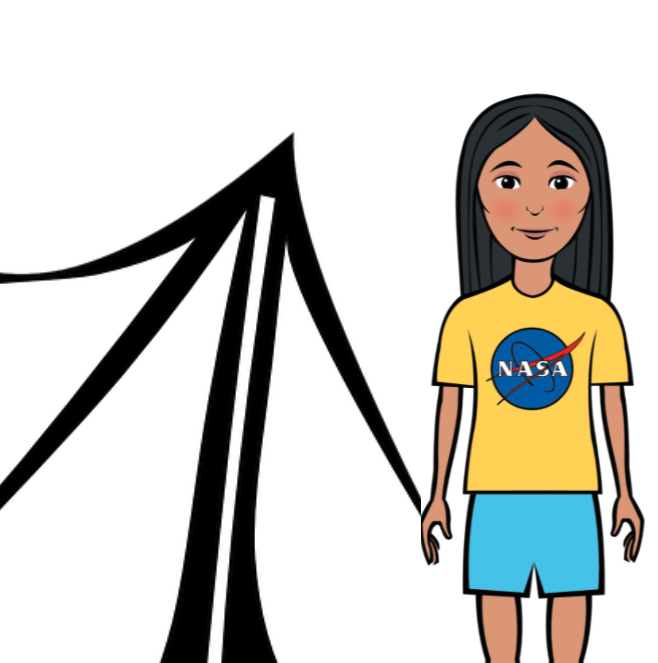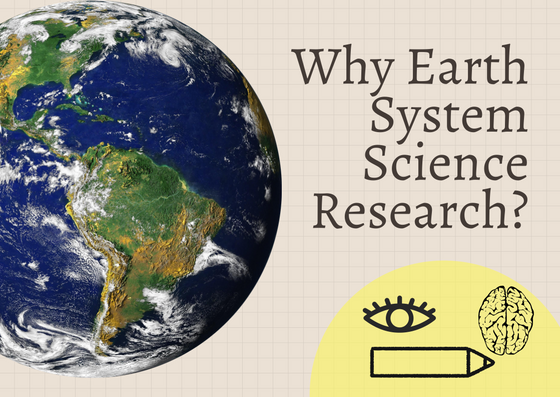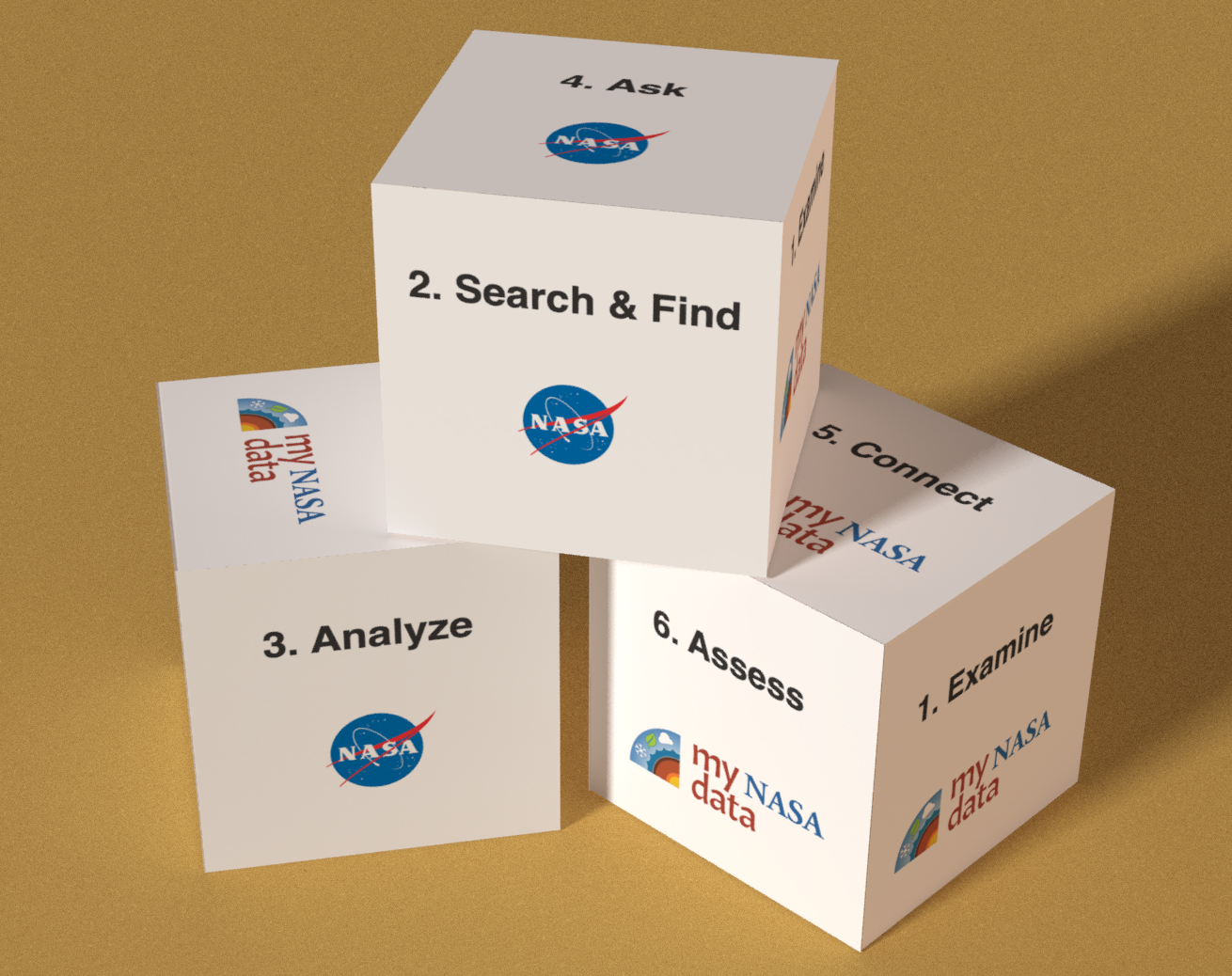Lesson Plans
Where in the United States is Awenasa? Lesson Plan
Overview
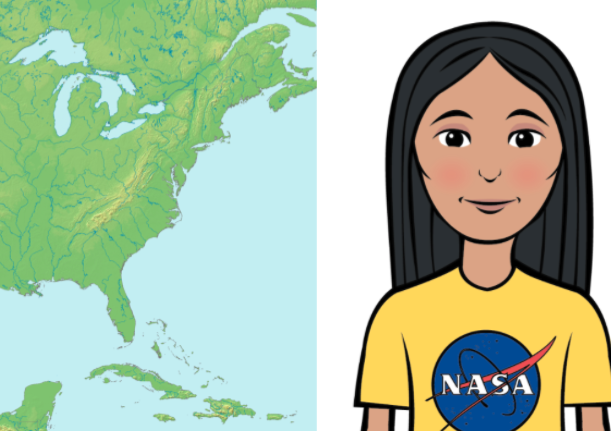 This lesson, "Where in the United States is Awenasa?" is a data analysis activity that presents maps of NASA Earth satellite data for a variety of locations across the United States for four months throughout the year. Each location represents a real science camp that is actively using NASA and GLOBE data to explore the environment. Learners use clues in the environmental data to locate the camp where Awenasa travels to over the year. This lesson is based on the GLOBE lesson, Where in the World...?".
This lesson, "Where in the United States is Awenasa?" is a data analysis activity that presents maps of NASA Earth satellite data for a variety of locations across the United States for four months throughout the year. Each location represents a real science camp that is actively using NASA and GLOBE data to explore the environment. Learners use clues in the environmental data to locate the camp where Awenasa travels to over the year. This lesson is based on the GLOBE lesson, Where in the World...?".
The intention of this activity is to provide four different environmental variables that can be presented either separately or in conjunction. Educators may also prefer to facilitate learning through a Jigsaw activity to have different groups of learners work on different variables (Clouds, Precipitation, Surface Skin Temperature, Vegetation) or four different months of the year (January, April, July, October).
Materials Required
- Educator Presentation
- Learner Sheets
- Image Sheet (Google Doc)
- Data Sheet: Surface (Skin) Temperature (Google Doc)
- Data Sheet: Normalized Vegetation Difference Index (Google Doc)
- Data Sheet: Cloud Coverage (Google Doc)
- Data Sheet: Precipitation (Google Doc)
- Optional:
Procedure
We highly encourage learners to complete the "Awenasa Goes to Camp!" lesson prior to conducting this activity.
1. Present the map below to the learners. Have learners generate research questions about the parks' environmental characteristics.
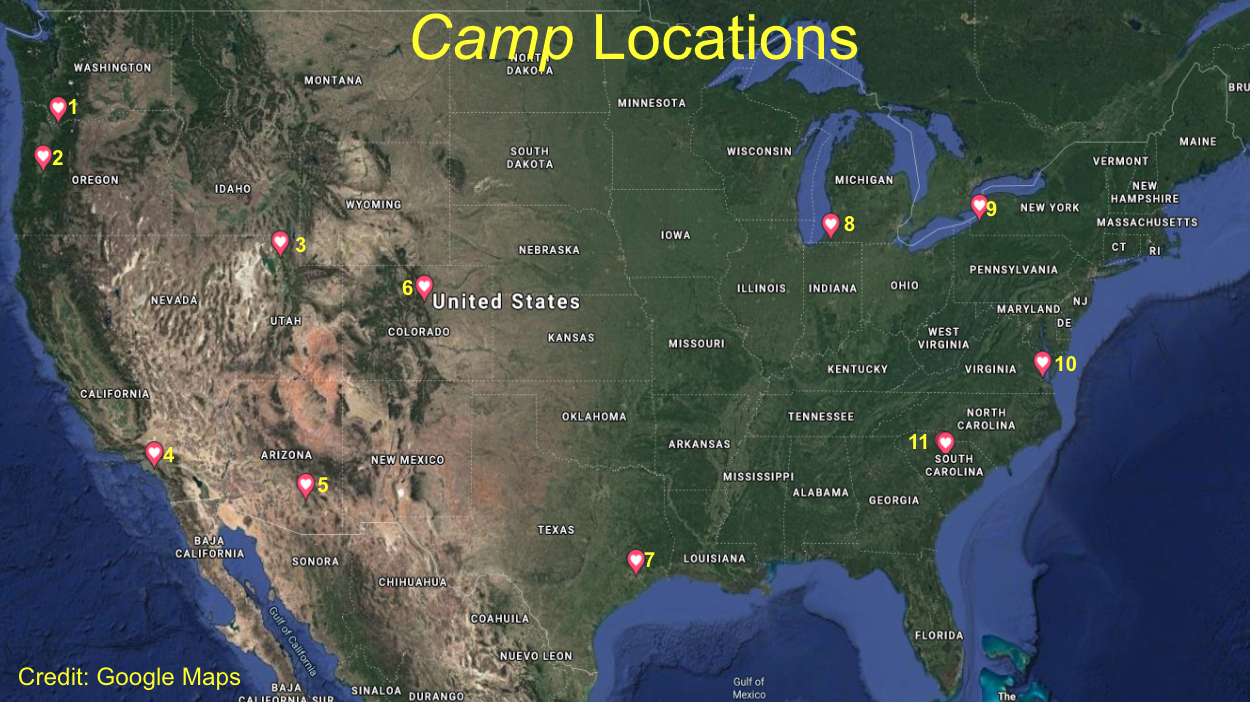
2. Assign learners to one of the 11 the different camp locations to work in pairs and brainstorm how the data values of the featured variable vary over the year.
- (For advanced learners, have them create a hand drawn line graph showing how they think the data values would change over the following months: January, April, July, and October. Have them label their graph with the title of the variable they are brainstorming. Keep this posted in the classroom as a reminder of their first predictions.) After the groups have finished, ask what problems they experienced in determining the shape of the data. What additional clues might be valuable? Help them to understand that location or geographic distribution – where these camps are located relative to each other – could be useful.
3. Display/distribute the maps of the appropriate variable/s to the groups and the learner data sheet for the said variable/s.
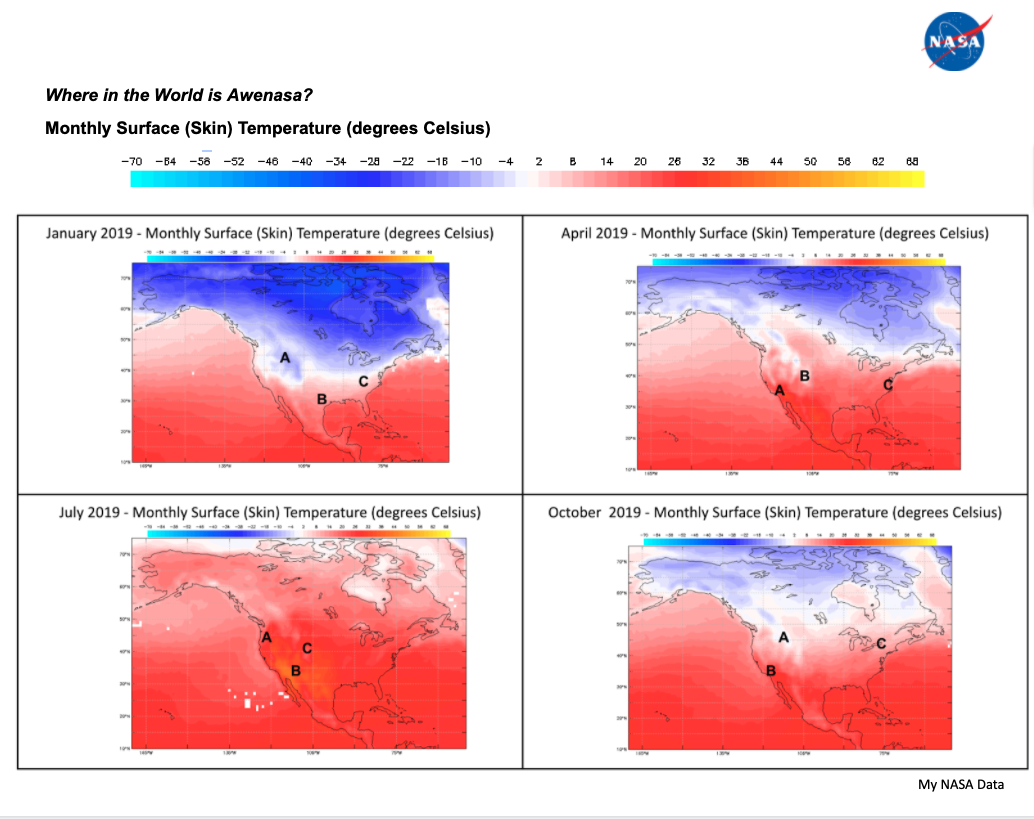
These maps show Monthly Surface Skin Temperature (January, April, July, October) |
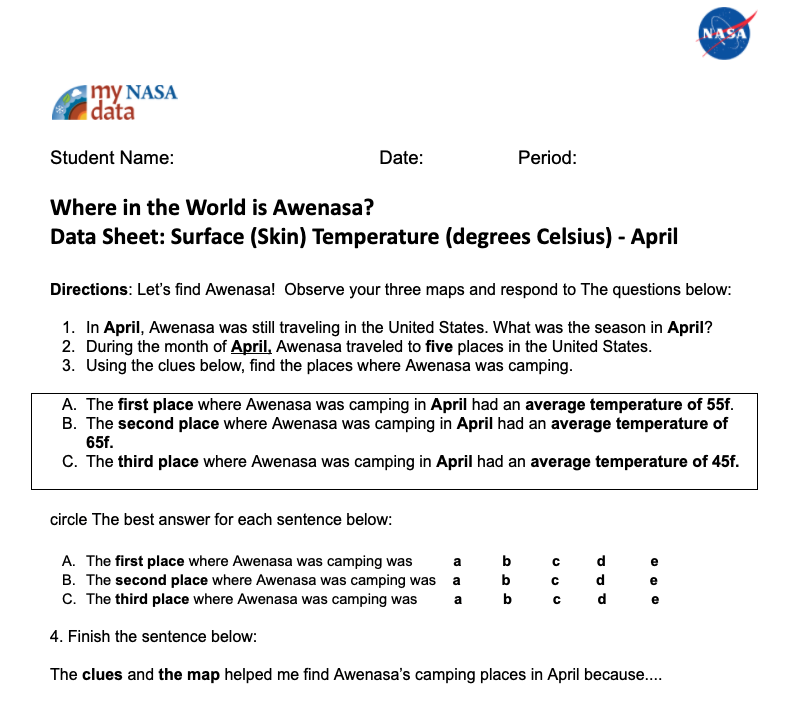
|
4. Learners work in groups to analyze the maps and answer the questions on the data sheets. (Note: They are no longer assigned to any particular location.) The groups should work independently to estimate the data values for the locations (based on the color bar on the maps).
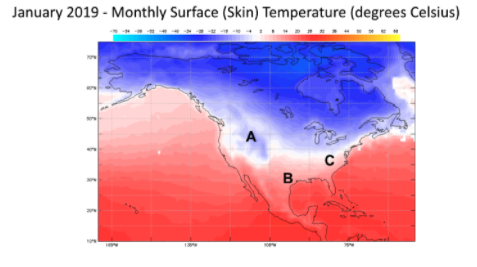

5. Discuss as a class how well these data fit into their original ideas (or graphs, for advanced learners). Advanced learners sketch out a new graph based on the data values offered on the maps. Discuss as a class how well these data fit into their sketched graphs.
6. Discuss how scientists make predictions based on previous knowledge and then incorporate new information as it becomes available into their predictions, making them more accurate. Explain that, through collecting data, GLOBE schools and partnering locations (like camps) can help enhance science models used by scientists to better predict Earth system phenomena.
Disciplinary Core Ideas:
- ESS2A: Earth Materials and Systems
- ESS2D: Weather and Climate
- ESS3A: Natural Resources
Crosscutting Concepts:
- Patterns
- Systems and System Models
Science and Engineering Practices:
- Developing and Using Models
- Analyzing and Interpreting Data
- Analyze NASA satellite data to determine campsite locations
- Explore seasonal patterns in data from the Atmosphere, Biosphere, and Geosphere.
- How do Earth science variables vary across the United States over the year?
1. What is remote sensing?
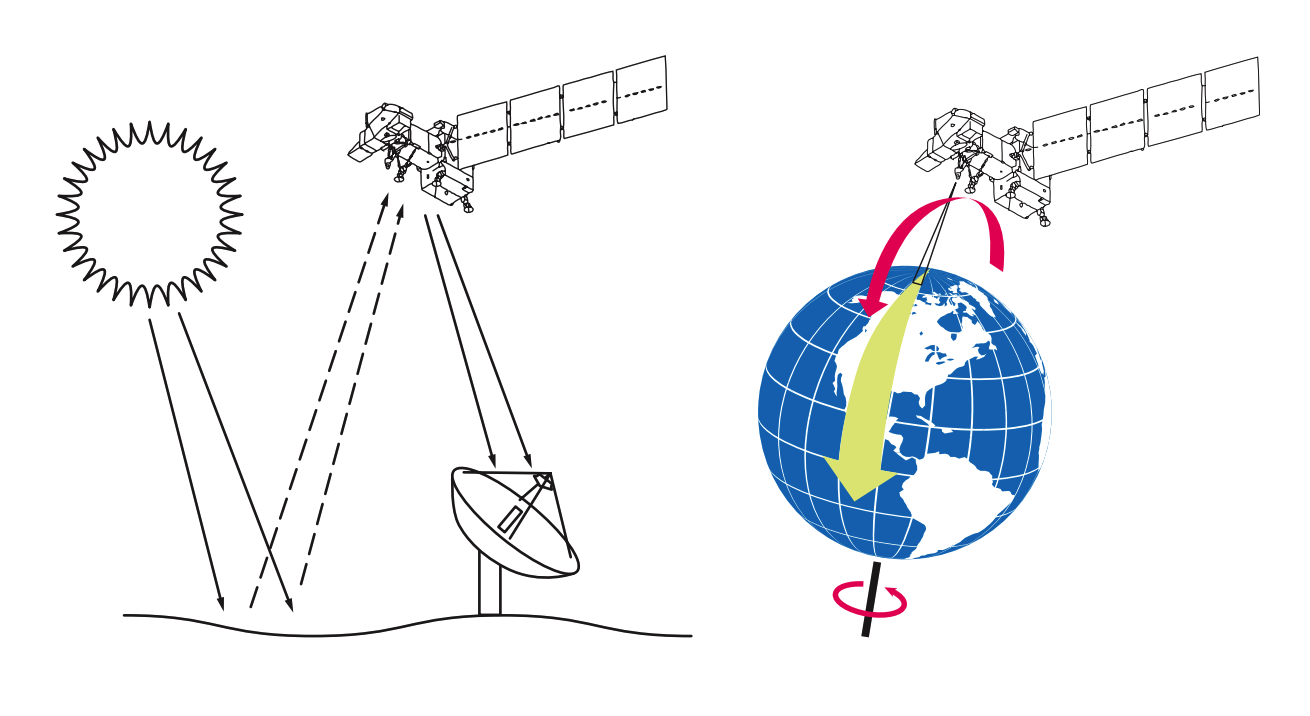
Remote sensing means observing something from a distance. Satellites in space observe the Earth from a distance and help scientists study large tracts of land and how that land changes over time. Optical remote sensing satellites use reflected light to detect electromagnetic energy on the Earth’s surface. The level of energy is represented by the electromagnetic spectrum, which is the range of energy that comes from the Sun or any other object in the Universe. The light from the Sun that we can see is only a small part of the electromagnetic spectrum and includes the colors of the rainbow. Satellite sensors can detect light that we can’t see.
The electromagnetic energy reflects off the Earth’s surface and up to the satellite sensor, which collects and records information about that energy. That information is transmitted to a receiving station in the form of data that are processed into an image.
2. How do satellite sensors work?
We can only see an object because light bounces off of it and to our eyes. Human eyes can detect only visible light—the colors of the rainbow. Satellite sensors can also detect ultraviolet and infrared light. The sensors record this information in different portions of the electromagnetic spectrum, which is measured in wavelengths.
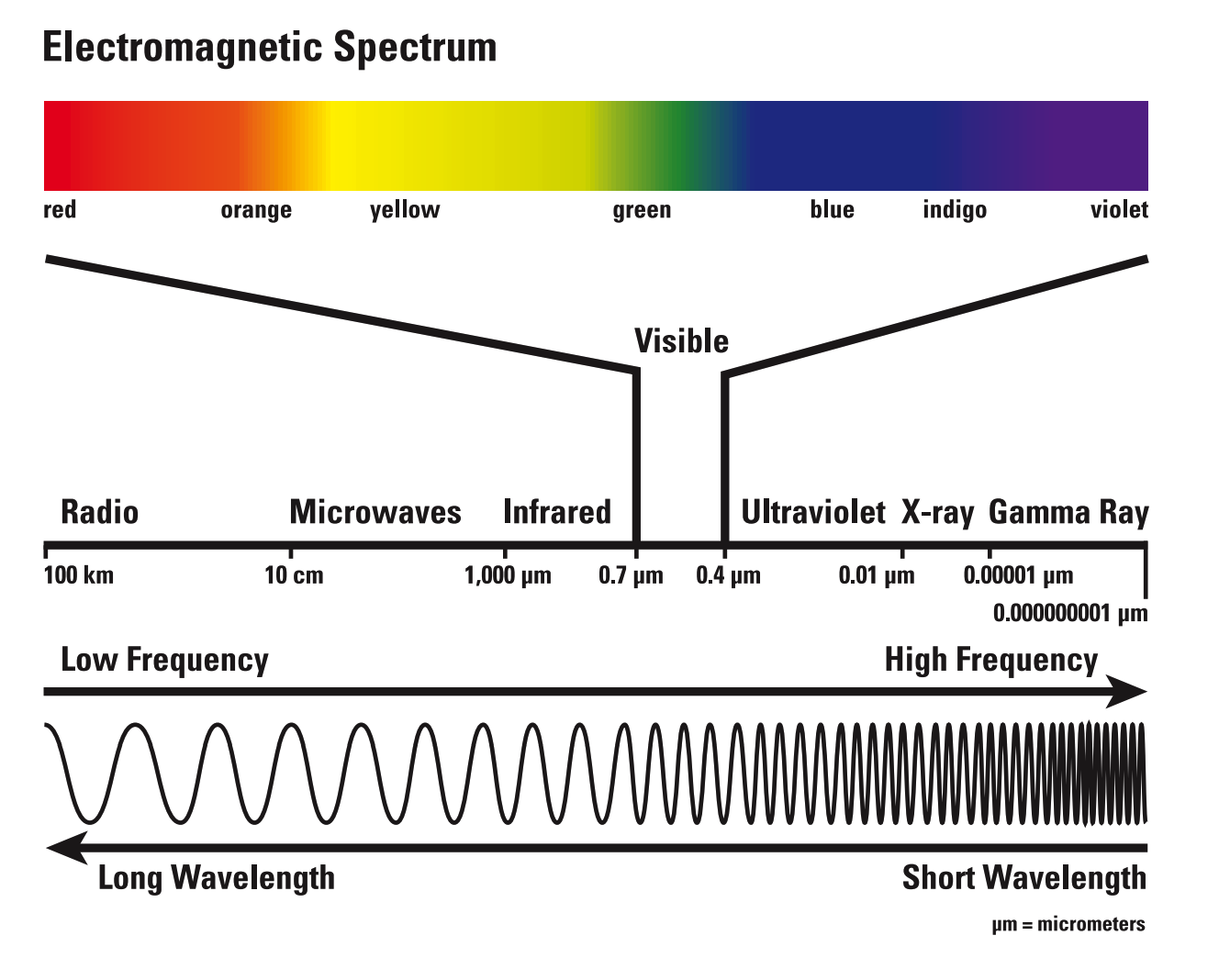
(For more information about Remote Sensing to study Earth, visit the Related Resources in this lesson.)
Credit: USGS
3. Exploring Earth Science Variables using Maps Collected by Remote Sensing
Variables featured in this lesson include the following.
| Cloud Cover - Monthly Total Cloud Coverage (percent coverage) This quantity describes the total percent cloud cover at all levels in the troposphere. These data have a grid spacing of 1 degree longitude and 1 degree latitude. The percent coverage is the amount of the sky that would be covered by all types of clouds if you were on the ground and you looked up. | 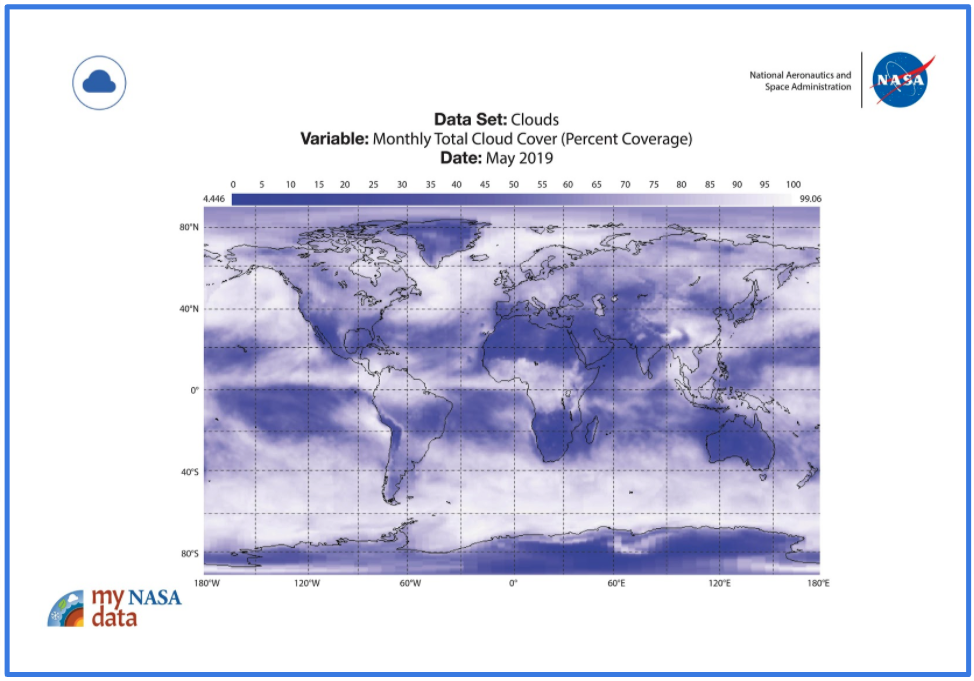 |
| Surface Temperature - Monthly Daytime Surface (Skin) Temperature (degrees Celsius) This quantity describes the temperature of the land or ocean surface in the topmost layer (first few centimeters at the top of the surface). It is different than the surface air temperature, which is a measure of the temperature of the air closest to the surface. Daytime skin temperature is greatly affected by solar energy absorbed, especially over land. Dark surfaces have a daytime skin temperature much greater than the temperature of the air above the surface.These data have a grid spacing of 1 degree longitude and 1 degree latitude. | 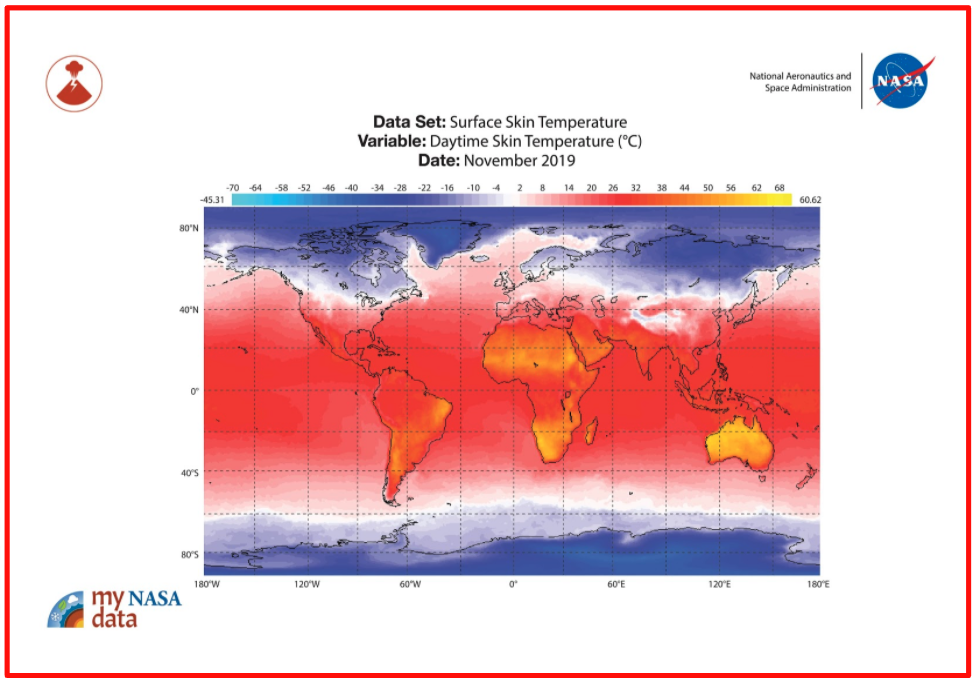 |
| Vegetation - Monthly Normalized Difference Vegetation Index (dimensionless) This quantity measures the health of plants on the Earth's surface, by how much near-infrared radiation is reflected at the surface. Plants with green leaves (from chlorophyll) using photosynthesis reflect more near-infrared radiation, so like the leaf area index, the normalized difference vegetation index (NDVI) is more positive for healthy and highly productive plants. These data have a grid spacing of 0.5 degrees longitude and 0.5 degrees latitude. |  |
| Precipitation -Monthly Average Precipitation Rate (Satellite Observed) (millimeters per day) This quantity provides the monthly average precipitation rate in millimeters per day. Precipitation includes both rain and snowfall, with snowfall contributing as the amount of liquid created when the snow is melted down. The total monthly precipitation at any location can be calculated by taking the precipitation rate and multiplying by the number of days in a month. The rate is an average; it does not mean that precipitation consistently falls at this rate throughout the month at any location. These data have a grid spacing of 0.5 degrees longitude and 0.5 degrees latitude. | 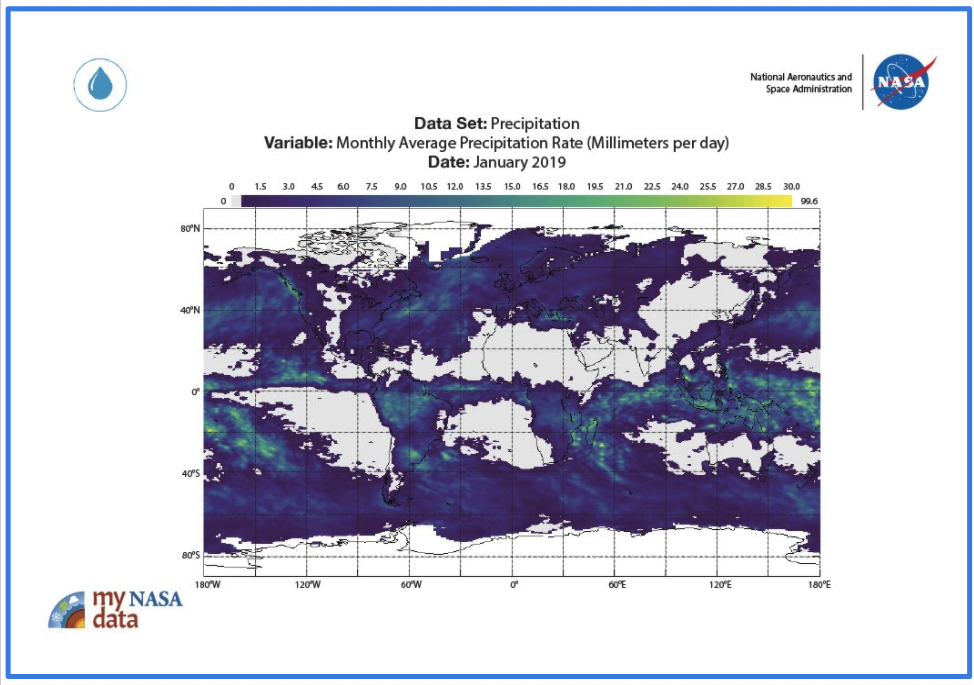 |
4. Jigsaw Teaching Strategy
Not familiar with Jigsaw? See link for this and other strategies.
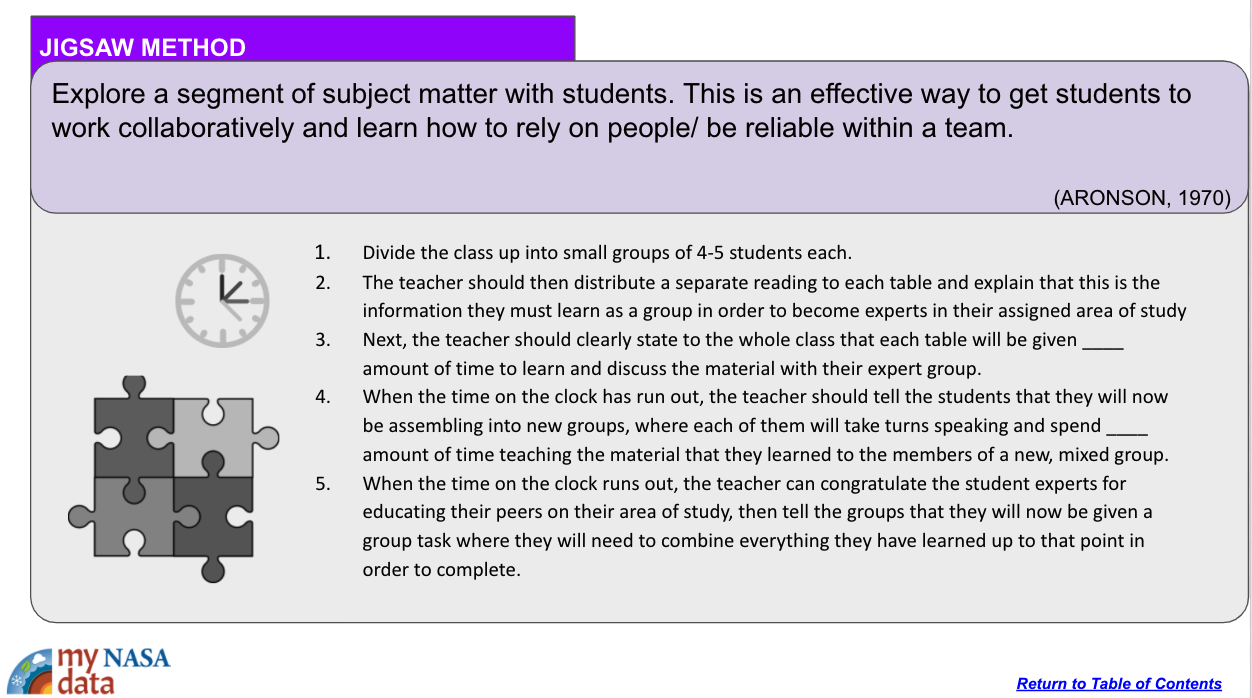
This activity is ideal for learners (grades 4-8) understand basic cause-and-effect relationships; the ability to read simple maps and are able to make simple data comparisons; know basic weather-related phenomena; and are able to create, interpret, and make predictions from charts based on information provided. For younger learners, or learners who do not possess these skills, educators may need to provide more input and provide clues at various steps, while for learners with more experience looking at graphs of data, less educator input would be necessary. Consider using the Mapped Data Cube to help scaffold learners' data analysis.
NASA satellites have been mapping Earth for over 40 years. These global observations of the atmosphere, biosphere, land surface, solid Earth, and ocean enable an improved understanding of the Earth as an integrated system.
- Geologist – A Geologist is one who studies the material that constitutes the Earth, the processes that shape it, and its history.
- Geotechnical Engineer – A Geotechnical Engineer is a type of civil engineer who focuses on the mechanics of the land, rocks, and soils in the building process.
- Geospatial Information Scientist – Geospatial Information Scientists research geospatial data or develop geospatial technologies.
- Internet Required
- One-to-One (tablet, laptop, or CPU)
- One-to-a-Group
- Teacher computer/projector only
- Color Printer

